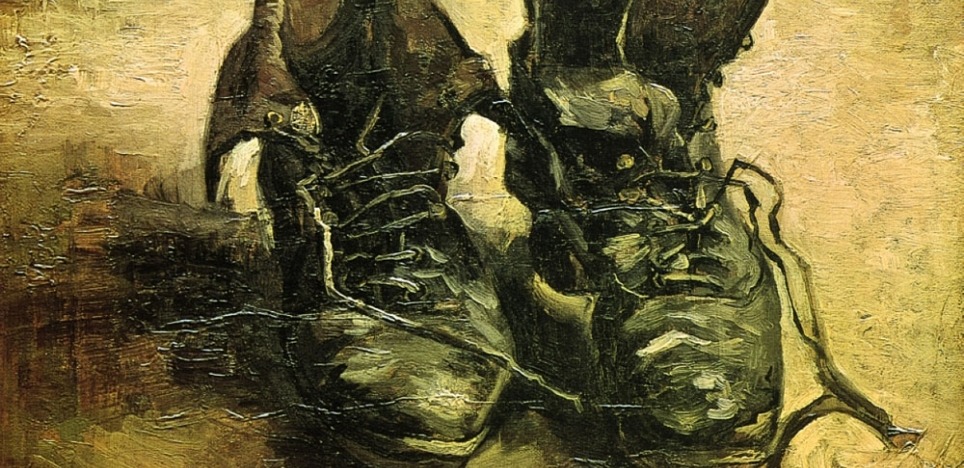In an article on Harpers.org, Scott Horton writes that in 2009, Cologne's Wallraf Richartz Museum premiered an exhibition entitled "Vincent Van Gogh: Shoes" built around an 1886 painting by the Dutch artist titled A Pair of Shoes. The curators take us on a journey through the very different readings and interpretations given by Martin Heidegger, Meyer Schapiro, and Jacques Derrida.
Art historians believe that Van Gogh (1853-1890) came across a pair of worn-out shoes in a Paris flea market and took them back to his studio. Rumor has it that they did not fit him, so he decided to use them as a prop for painting. As a result, they have become "the most celebrated footware in the history of modern art."
The philosopher Martin Heidegger saw the painting on exhibition in Amsterdam in 1930 and later wrote about it:
"From the dark opening of the worn insides of the shoes the toilsome tread of the worker stares forth. In the stiffly rugged heaviness of the shoes there is the accumulated tenacity of her slow trudge through the far-spreading and ever-uniform furrows of the field swept by a raw wind. On the leather lie the dampness and richness of the soil. Under the soles slides the loneliness of the field-path as evening falls. In the shoes vibrate the silent call of the earth, its quiet gift of the ripening grain and its unexplained self-refusal in the fallow desolation of the wintry field."
Although the exhibition included the responses of Shapiro and Derrida, they do not match the creativity and breadth of Heidegger's interpretations of Van Gogh's painting. We have read other commentaries on A Pair of Shoes which see the worn-out leather and tired soles as symbols of the painter's weary and threadbare life. Others have put themselves in these shoes and imagined themselves walking through diverse landscapes, working under bright skies, or trudging home with sweaty feet after hard labors in the fields. Others are willing to let the painting simply speak for itself as a study of shoes with dull brown color and a background of gold.
In a letter to his brother Theo, Vincent Van Gogh said, "It is good to love as many things as one can. … I see paintings or drawings in the poorest cottages, in the dirtiest corners. And my mind is driven toward these things with an irresistible momentum. … Poetry surrounds us everywhere, but putting it on paper is, alas, not so easy as looking at it. I dream my painting, and then I paint my dream." To be spiritual is to have an abiding respect for the great mysteries of life and to see the fingerprints of the Divine in the most ordinary objects and things.
We see that touch in A Pair of Shoes, and we are grateful to Van Gogh for opening our eyes to these humble companions which we usually take for granted. The artist conveys the sanctity of the shoes and as a result, we are compelled to reframe our view of them. Thank you, Vincent, for helping us to love as many things as we can.
